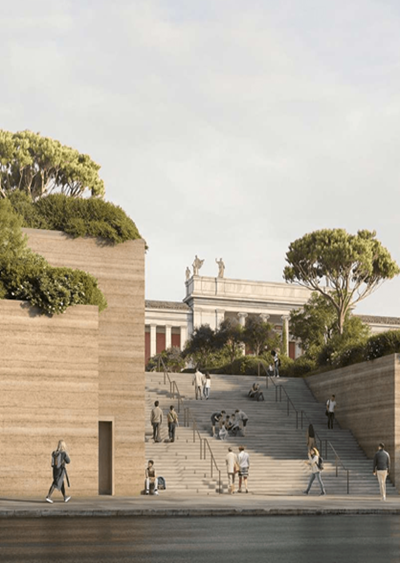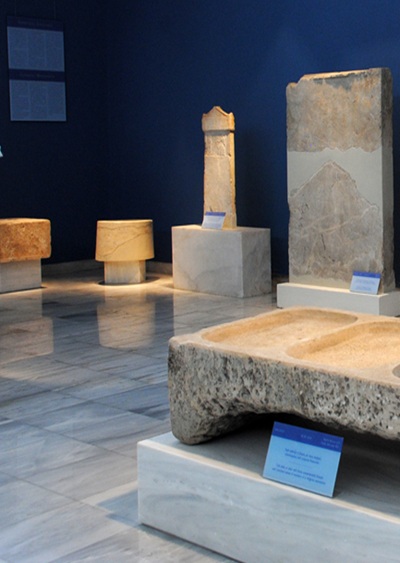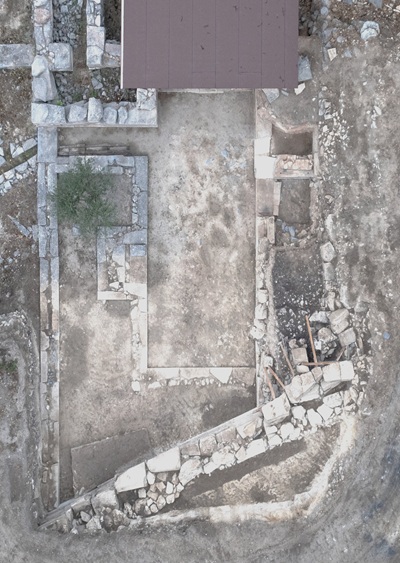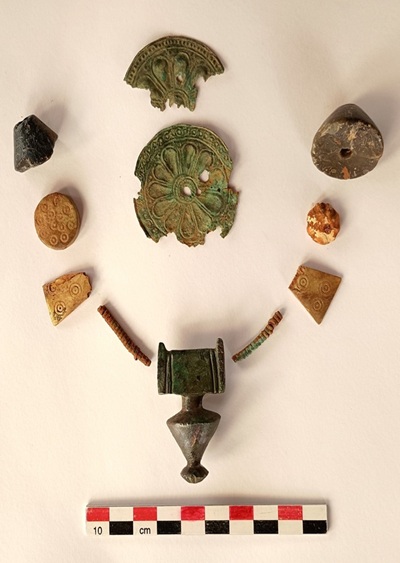
The restoration of the gardens of the Palace, in P. royal estate of Tatoi, proceeds within the framework of the overall restoration and promotion planning of Tatoi. The central idea of the study, on which the Central Council of modern monuments unanimously approved, is the restoration of the Gardens based on their original engravings, but also on the modern principles of Fire Protection and sustainability.
As stated by the Minister of Culture and Sports Lina Mendoni “the restoration and promotion of the gardens of the Palace are part of the overall planning of the Ministry of Culture and sports for the restoration and promotion of the historical core of Tatoi, as part of its strategic exploitation as a monumental whole. The historical documentation, the institutional framework for the conservation and restoration of the Historic Gardens, the topographical features, the use of suitable plant material, adapted to the microclimate and resistant to fire, as well as the use of materials based on the principles of reversibility and sustainability, are key parameters of the design of the restoration study. The gardens are revived, as an important part of the spatial composition and life in Fr. Royal habitat, but also the experience of today’s visitor”.
The location of the Gardens is located south of the building complex of the Palace and the galleys and in the immediate vicinity of the Poplar Gate. The northernmost level of the Gardens is at the highest level including the configurations directly connected to the Palace. From this level begins the double wide marble staircase, in a symmetrical arrangement, for access to the lower level of the gardens. The immediately lower level comprising the ellipsoid fountain and swimming pool was constructed in the 1950s. From this level and below, the central alley of the Gardens is formed, which has an important role in the spatial organization of the gardens, while on either side, paths are formed arranged in concentric circles. In places where the transverse paths intersect with the circular arrangement, individual roundabouts arise. An additional node is located in the center of the spiral, as the end of the path in the Maze. Central and east of the Alley, the design supports the logic of the walk. In the sector, to the west of the alley, utilitarian functions such as the greenhouse and the tennis court are located.
The intervention area of the study includes an area of 34 acres and a perimeter of 762 meters. The role of trees is very important in the composition of plant material. About 450 trees are planted. The paths Follow the original engravings as they undergo and become traced by the traces of their delineation. The creation of water permeable surfaces contributes to the development of biodiversity by ensuring natural conditions in the environment, while encouraging the development of local flora and fauna.
The restoration study of the gardens of the Palace in Tatoi is carried out by Elli Pangalou and is sponsored by AIGEAS NGO to the Ministry of Culture and Sports. The implementation of the project is funded with 3.000.000 euros from the recovery and Resilience Fund
The estate was purchased by George I in 1872. In 1886 the Palace was completed and in 1890 The Gardens the landscaping of the gardens around the Palace, as well as the redevelopment work of the whole estate is the work of Ludovico Münther a Danish Forester and philhellene, director of the estate (1873-1892). In 1916 the Great Fire broke out from which the New Palace and gardens were rescued. Between 1924 and 1926, a ten-year program of the higher Forestry and higher Agricultural School was implemented for the management of the gardens. In the 1950s the pool was added to the Grotto level. The 2021 mega-fire destroyed most of the plantings, which at the end of the project will have been restored.











Leave A Comment